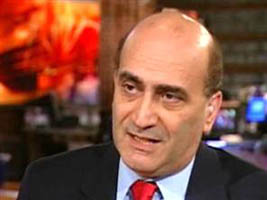April 13 and no more leapers…
Dr. Walid Phares/April 13/16
On Sunday April 13, 1975 I was on my way to buy Maamoul from Ward’s ice cream shop in Furn el Hayeck, Ashrafieh. I learned that some major shooting took place in Ain el Remmaneh. Looping via Tabaris to come back to my home on Shehade Street, I saw a lone man in olive green uniform with an AK 47 looking serious and standing in the middle of the street in front of the al Jareeda building. He was not a soldier from the Lebanese Army. At the time I was in high school at the Lycee Francais. I asked him, what’s going on?
He looked at me with a severe facial expression and said “ma fine’ ellak.” Then he added: “rouh 3al beit, ahsan.” I asked again if he knew anything about the Ain el Remmaneh shootings and if it was between the PLO and the Kataeb. He had no idea that at my young age I had already a pretty good knowledge about the history of the country and the politics of the community. That I knew the name and the evolution of every group within the PLO, the National Movement and the ideology of each regime in the region. That I had read all books available on Arab nationalism, Marxism, and Lebanon, as well as on Arab and Meditarrenean history, in my brother’s library.
He was standing proud with his machine gun and his fatigues as if Khaled Ibn el Walid was about to erupt from Sodeco. But he couldn’t tell the teenager I was then, what was going on. How to blame him? It was the political culture then. From 1943 to 1975 Lebanon’s real, deep history was eradicated in the civil education books. Only the leftwing and the Arab nationalists had a comprehensive narrative that was constructed logically. But it was wrong when it came to the identity of the country and its communities. The rightwing parties used not more than six to seven terms, including the “6000 years of history” and “love it or leave it.” Beyond that it was zajal and poetry. Only Said Aql offered some insights on a Phoenician linked Lebanese nationalism, but it was all about Gods and Goddesses, Melkart and Adonis. The Islamist ideology was hidden deep somewhere inside Tripoli and Saida, while the progressives intellectuals where en vogue sipping espressos at Hamra’s cafes.
Lebanon’s pluralist identity was neutered in 1920, 1926 and 1943. My brother and I had to go to hidden archives of our great uncle Father Joseph Phares who advised Bishop Ignace Mubarak in the 1940s, and who had Fuad Afram Bustany, Edouard Honein and at times Charles Malek as students. They used references to Paul Noujaim’s works from 1905. My brother Sami read Reverend Phares’ archives and I spent many hours with Fuad Afram Bustany later. We knew what was going on, years before April 1975. We saw it coming. We warned about it. We met Bashir in 1973. Many have felt it coming but we placed it in its historical context. We were too young to play the adults and few took us seriously.
It was so depressing that we had to write graffiti on the walls of Beirut to wake up the unconscious people around us before the great explosion of April. Sami called for a federal system or a political resolution to the identity crisis already in 1970 while he was a first year law student. He wanted our beautiful mother country to avoid the conflict. He was treated as a strange marginal little guy.
That morning in Tabaris at the sight of that young militiaman armed to the teeth and ready to enter a war he had no idea about, explained it all to me. An entire country was heading towards the cliff. Communities were being mobilized to engage in a conflict with no horizons. Those who were sophisticated had it wrong and those who were too simple woke up late. The rest is as you know it and as many among us lived it.
Today in April 13, 2016, the time distance between today’s Lebanon and the one of 1975 is forty one years. More than the time distance between the year of independence in 1943 and the year when the conflict erupted. More years were spent at war, conflict and under occupation than under a peaceful and independent Lebanon: 43 versus 32.
Every year an April 13 is remembered the Lebanon of memories is fading away. Either a leap or a slow fall…But are there leapers in the mother country?




















